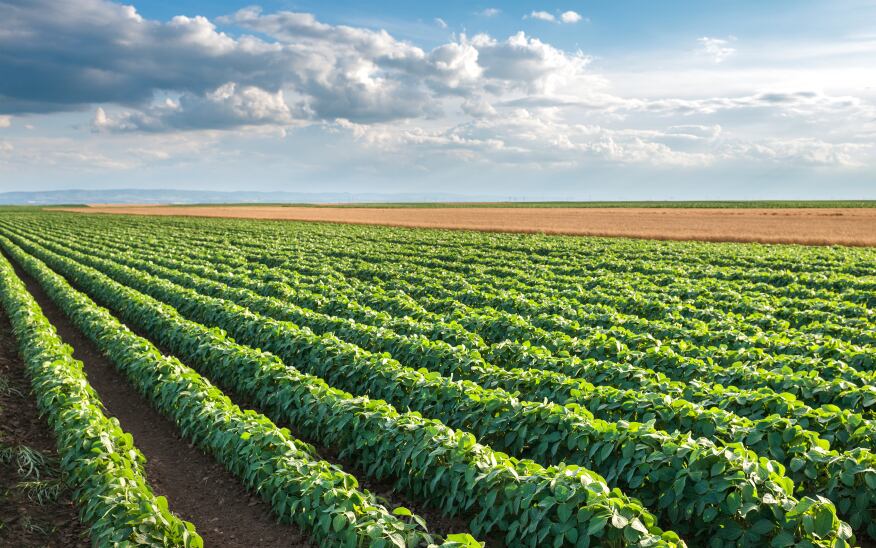The study, published in Plant Physiology, reviewed rubiscos’ efficiency in 75 plant species, including major crops. Rubiscos is the central enzyme in photosynthesis which enables plants to absorb carbon from the atmosphere.
Engineering crops with the most efficient rubiscos could mean they grow more quickly, and with less need for additional fertilisers, said the researchers, led by Dr Douglas Orr at Lancaster University.
“We were able to identify a number of 'superior' rubiscos which modelling suggests could improve photosynthetic efficiency in crops such as wheat and soybean. This provides important information in our efforts to produce more sustainable crops," study author Dr Elizabete Carmo-Silva, Lancaster University, added.
Affinity for CO2 was highest in the rice breed Oryza sativa ssp Indica (Asian rice), and CO2/ O2 specificity was high in the grass Poa palustris, photosynthesising at 25°C. The lowest CO2 specificity was found in C4 grasses including E.tef and Panicum (switchgrass), the team said.
In times of climate change, poor crop yields and a rapidly growing population set to hit nine billion by 2050, crop efficiency is vital to global food security and will become more so, the team stressed.
“The threat to global food security of stagnating yields and population growth makes increasing crop productivity a critical goal over the coming decades,” the researchers said, adding: “One key target for improving crop productivity and yields is increasing the efficiency of photosynthesis.”
“As the gatekeeper of carbon entry into the biosphere and often acting as the rate-limiting step of photosynthesis, rubisco, the most abundant enzyme on the planet, is an obvious and important target for improving crop photosynthetic efficiency.”
Other recently studied methods for increasing crop output include adding zinc oxide nanoparticles to phosphorus rock-based fertilizer.
Rubiscos engineering

Photosynthesis modelling shows that direct replacement of native rubisco in a crop, such as soybean, with two high performing rubiscos is possible. It could mean improved photosynthesis in current CO2 levels and a heating environment.
“Analysis of detailed biochemical characterisation alongside sequence information suggests that targeted mutation of key residues or replacement of crop rubisco with superior existing enzymes will aid in efforts to engineer improved carbon assimilation in key crops,” the researchers noted.
The Lancaster University-based team and the Realizing Increased Photosynthetic Efficiency (RIPE) consortium are now working on improving crops like rice, cassava, soybean and cowpea with the best rubiscos.
However, the team could face opposition in the face of the controversial topic of genetic modification of crops.
Surviving diverse temperatures

One study goal was to characterise properties of rubisco from a range of plant species from diverse environments over the world.
As such, analysis of various plants’ rubisco performance in varying temperatures (20, 25 and 30°C) was important information for engineering crops for specific environments, the team said.
Results were compared to average temperatures of the warmest quarter in the regions where each species grows to investigate the role of temperature in modulating rubisco catalysis.
“The temperature response of the various catalytic parameters was largely consistent across the diverse range of species, though absolute values showed significant variation in Rubisco catalysis, even between closely related species,” the team noted.
“An analysis of residue differences amongst the species characterised identified a number of candidate amino acid substitutions that will aid in advancing engineering of improved Rubisco in crop systems.”
There have been relatively few attempts to characterise temperature effects on rubisco’s photosynthesis properties, and often studies have focussed on only a subset of catalytic properties, they added.
“This new information gives us the opportunity to tailor the photosynthetic performance of crops for specific environments,” said another study author, professor Martin Parry at Lancaster University.
Source: Plant Physiology
Published online ahead of print, doi: 10.1104/pp.16.00750
“Surveying Rubisco diversity and temperature response to improve crop photosynthetic efficiency”
Authors: Douglas Orr, et al.
